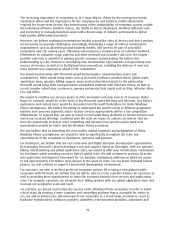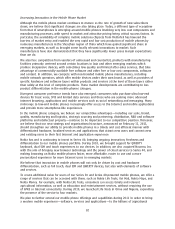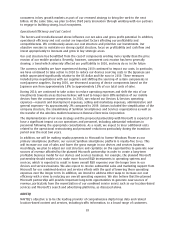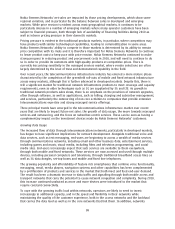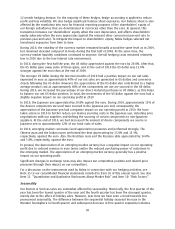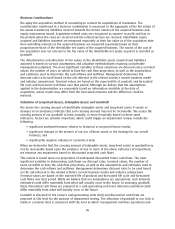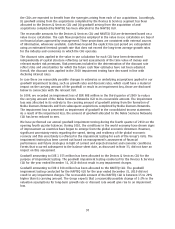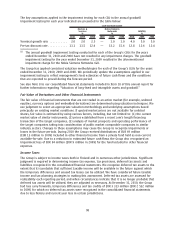Nokia 2010 Annual Report Download - page 90
Download and view the complete annual report
Please find page 90 of the 2010 Nokia annual report below. You can navigate through the pages in the report by either clicking on the pages listed below, or by using the keyword search tool below to find specific information within the annual report.In addition, Nokia Siemens Networks expects to capture growth by focusing on driving momentum in
the areas of: mobile broadband, TDLTE, services, customer experience management, and addressing
the competition from internet players.
Nokia Siemens Networks will need to continue to leverage and, in some cases, improve its scale,
technology and product portfolio to maintain or improve its position in the market. Nokia Siemens
Networks is confident that it can maintain momentum in those key areas and therefore targets its net
sales to grow faster than the market in 2011.
There are several factors that drive the profitability at Nokia Siemens Networks, and the company’s
second priority for 2011 is to capture value in all such areas to drive profitability. Scale, operational
efficiency and cost control have been and will continue to be important factors affecting Nokia
Siemens Networks’ profitability and competitiveness. Nokia Siemens Networks’ product costs are
comprised of the cost of components, manufacturing, labor and overhead, royalties and license fees,
the depreciation of product machinery, logistics costs as well as warranty and other quality costs.
Continued momentum in reducing product costs and capturing procurement savings will be a key
areas in 2011. Nokia Siemens Networks’ profitability is also impacted by the pricing environment,
product mix, including higher margin software sales, and regional mix.
Nokia Siemens Networks will therefore continue to seek areas of value in higher margin sales through
increasing the proportion of software sales in its Network Systems and Global Services, but will also
seek to improve the performance of its Business Solutions unit. Nokia Siemens Networks will continue
to prioritize those regional markets, such as Japan, Korea and the US, where it believes it can capture
more value.
Nokia Siemens Networks targets its operating margin to be above breakeven in 2011, excluding
special items and purchase price accounting related items.
Nokia Siemens Networks continues to target reductions of annualized operating expenses and
production overheads of EUR 500 million by the end of 2011, compared to the end of 2009, excluding
special items and purchase price accounting related items.
Certain Other Factors
Exchange Rates
Our business and results of operations are from time to time affected by changes in exchange rates,
particularly between the euro, our reporting currency, and other currencies such as the US dollar, the
Japanese yen and the Chinese yuan. See Item 3A “Selected Financial Data—Exchange Rate Data.”
Foreign currency denominated assets and liabilities, together with highly probable purchase and sale
commitments, give rise to foreign exchange exposure.
The magnitude of foreign exchange exposures changes over time as a function of our presence in
different markets and the prevalent currencies used for transactions in those markets. The majority of
our noneuro based sales are denominated in the US dollar, but Nokia’s strong presence in emerging
markets like China, India, Brazil and in Russia also gives rise to substantial foreign exchange exposure
in the Chinese yuan, Indian rupee, Brazilian real and Russian ruble. The majority of our noneuro based
purchases are denominated in US dollars and Japanese yen. In general, depreciation of another currency
relative to the euro has an adverse effect on our sales and operating profit, while appreciation of
another currency relative to the euro has a positive effect, with the exception of the Japanese yen,
being the only significant foreign currency in which we have more purchases than sales.
In addition to foreign exchange risk of our own sales and costs, our overall risk depends on the
competitive environment in our industry and the foreign exchange exposures of our competitors.
To mitigate the impact of changes in exchange rates on net sales as well as average product cost, we
hedge material transaction exposures on a gross basis, unless hedging would be uneconomical due to
market liquidity and/or hedging cost. We hedge significant forecasted cash flows typically with a 6 to
89


